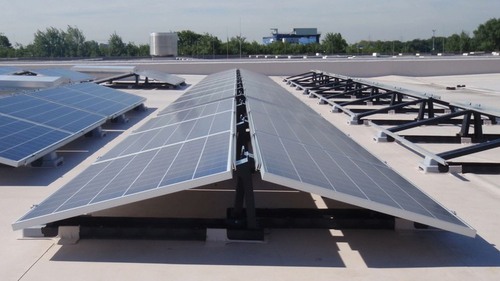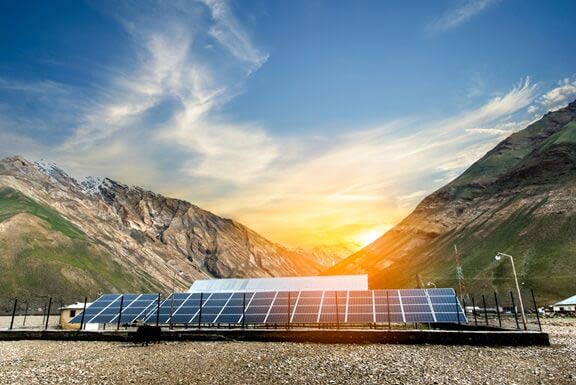As worldwide energy demand soars and climate concerns strengthen, the shift toward sustainable power generation has become predictable. Among renewable solutions, Rooftop Solar PV systems stand out as one of the most transformative technologies reforming both residential and commercial energy sceneries.
These systems are democratizing access to clean energy, dipping electricity costs, and nurturing energy freedom across the globe. According to Fairfield Market Research, the Rooftop Solar PV Market is observing a paradigm shift driven by promising government incentives, technological advancements, and decreasing installation costs.
The New Era of Decentralized Energy
Traditional energy systems rely profoundly on centralized power plants that transmit electricity across huge networks, often resulting in transmission losses and inefficiencies.
Rooftop Solar PV systems, by contrast, decentralize energy production. Homes, schools, factories, and office buildings can now become micro power stations, producing their own electricity and even feeding surplus power back into the grid.
This decentralized model improves grid flexibility and authorizes consumers to play an active role in the clean energy ecosystem. It also allays topmost load pressures on utilities, particularly during high-demand periods. The result is steadier, effectual, and sustainable energy infrastructure.
Cost Efficiency and Energy Independence
One of the most convincing reasons for the quick adoption of Rooftop Solar PV systems is cost competitiveness. Over the past decade, the price of solar panels has dropped by more than 80%, while energy storage costs have continued to decline. This affordability has made solar installations manageable to homeowners and small businesses alike.
For residential users, solar panels can offset up to 70–90% of electricity bills, reliant on system capacity and sunlight accessibility. For commercial facilities, the savings are even more noteworthy given their high energy consumption patterns.
Moreover, businesses can profit from quicker depreciation, tax credits, and green financing schemes presented by governments to inspire adoption.
Energy freedom is another chief advantage. Rooftop solar systems decrease reliance on grid power, insulating users from fluctuating electricity tariffs and possible supply disruptions. With the totaling of storage systems, buildings can operate separately during power outages, ensuring continuous productivity and comfort.
Emerging Trends of Solar Energy in India

Rooftop solar photovoltaic (PV) systems have become a game-changer in India’s energy landscape. This shift isn’t just about adopting a new technology, it’s about reimagining how energy is produced, shared, and consumed. By moving toward decentralized, resilient, and sustainable power generation, both households and businesses are taking part in a broader movement that supports India’s economic growth and environmental goals.
Government initiatives like the PM Surya Ghar: Muft Bijli Yojana have played a chief role in accelerating this transition. Combined with the clear financial benefits where solar power often costs less than traditional grid electricity for commercial and industrial users, rooftop PV systems are empowering homeowners to gain energy independence and helping businesses cut down on operative expenses.
Yet, despite this growth, a few key challenges still remain. High upfront installation costs, chiefly for lower-income households, endure to limit adoption. In addition, varying net-metering rules across states create confusion and slow down wider implementation.
To make rooftop solar actually universal, India desires to reinforce its policy framework, simplify financing options, and invest in technologies like smart grids and advanced battery storage to preserve grid stability as renewable energy use grows.
With hundreds of gigawatts of solar potential still waiting to be tapped, the chance ahead is massive. By focusing on steady policies, reasonable financing, and quality installation standards, India can endure to lead its solar revolution.
Rooftop solar isn’t just about producing clean electricity, it’s about powering a sustainable, secure, and self-reliant future, one rooftop at a time.
Technological Innovations Fueling Market Expansion
The continuing technological evolution in the Rooftop Solar PV Market is a key driver of acceptance. Advanced materials, smart inverters, and AI-driven monitoring systems have improved the competence and performance of solar installations.
Modern PV modules now convert daylight into electricity with productivity prodigious 22%, a substantial upgrading from former generations.
Furthermore, bifacial panels, which capture sunlight from both sides, and building-integrated photovoltaics (BIPV), which embed solar cells into construction materials, are growing design flexibility and space utilization.
The integration of IoT and AI enables real-time energy management, projecting maintenance, and performance optimization, further lowering operative costs and cultivating return on investment.
Government Policies and Incentives Driving Adoption

Global and national policy frameworks have played an instrumental role in expanding the Rooftop Solar PV Market. Governments crosswise regions are offering capital subsidies, feed-in tariffs, and net-metering policies to make solar acceptance financially feasible.
For instance, India’s PM Surya Ghar Muft Bijli Yojana goals to install rooftop solar in 10 million households, offering free electricity up to 300 units per month. Likewise, in the United States, the Investment Tax Credit (ITC) permits homeowners and businesses to subtract a percentage of installation costs from their federal taxes.
In Europe, countries like Germany and the Netherlands have recognized feed-in tariffs that reward consumers for exporting excess power to the grid.
These incentives are not only making rooftop solar more reasonable but also driving large-scale contributions across residential, commercial, and industrial sectors.
Rooftop Solar in the Commercial Sector: A Competitive Edge
For commercial enterprises, solar adoption outspreads beyond sustainability; it’s a calculated investment. Rooftop Solar PV systems improve brand reputation by signifying corporate responsibility and alignment with universal ESG (Environmental, Social, and Governance) goals.
Warehouses, shopping malls, hospitals, and educational institutions are among the chief adopters, leveraging massive roof spaces to produce clean power. These installations aid in offsetting operational expenses, stabilising long-term energy budgets, and reducing carbon footprints. Moreover, businesses that approve solar early often gain competitive advantages through lower energy costs and enhanced stakeholder perception.
The Role of Energy Storage and Smart Grids
The integration of battery storage is revolutionizing how Rooftop Solar PV systems operate. Energy storage systems permit users to store surplus power generated during the day for use at night or during outages, maximizing self-consumption and consistency.
The rise of smart grids balances this tendency by enabling two-way energy communication between users and utilities. Consumers can sell idle power back to the grid, creating new revenue streams and cultivating grid flexibility. This synergy between storage and smart grids signifies a chief leap toward a decentralized, bright energy future.
Urban and Rural Synergies in Solar Adoption
While cities lead the way in primary acceptance, rural areas hold huge potential for rooftop solar growth. In regions where grid connectivity is weak or nonexistent, solar PV systems deliver a consistent and sustainable power alternative.
Microgrids powered by rooftop solar installations are cultivating energy admittance in remote areas, supporting local businesses, schools, and healthcare centers. As battery storage and microgrid technologies become more reasonable, rural electrification through rooftop solar is set to fast-track, associating energy gaps and supporting economic development.
Sustainability and the Global Carbon Footprint
The environmental paybacks of rooftop solar systems are reflective. Every kilowatt-hour of solar electricity produced decreases greenhouse gas emissions by offsetting fossil fuel-based power. Extensive adoption could cut millions of tons of CO₂ yearly, contributing suggestively to national and global climate targets.
According to Fairfield Market Research, the Rooftop Solar PV Market plays an essential role in attaining carbon neutrality goals beneath frameworks like the Paris Agreement. With the international importance of renewable energy transition, rooftop solar is set to continue as a keystone of wide-reaching sustainability strategies.
Challenges and the Road Ahead
Despite amazing progress, firm challenges continue. High upfront costs, limited financing options, and structural limitations in older buildings can slow solar adoption. Furthermore, unpredictable policy frameworks and a lack of cognizance in developing regions endure barriers.
However, with unceasing innovation, expanding policy support, and falling costs, these challenges are being gradually overcome. Financial institutions and solar developers are introducing ground-breaking leasing and power purchase agreements (PPAs) to make solar adoption manageable to a wider audience.
Conclusion
The rise of rooftop solar PV systems marks an essential moment in India’s transition toward a cleaner and more self-reliant energy future. By enabling homes and businesses to produce their own power, rooftop solar is reducing necessity on the grid, lowering electricity costs, and contributing knowingly to the nation’s renewable energy goals. With robust government support, advancing technology, and growing public awareness, this transformation is no longer just an environmental initiative, it’s an economic and social revolution.
To fully realize its potential, India must endure addressing challenges such as financing barriers, regulatory inconsistencies, and the essential for robust grid infrastructure. With the right mix of policy reforms, innovation, and public contribution, rooftop solar can brighten the path to a sustainable future, one where every household and enterprise plays a part in powering the nation’s growth through clean, renewable energy.

